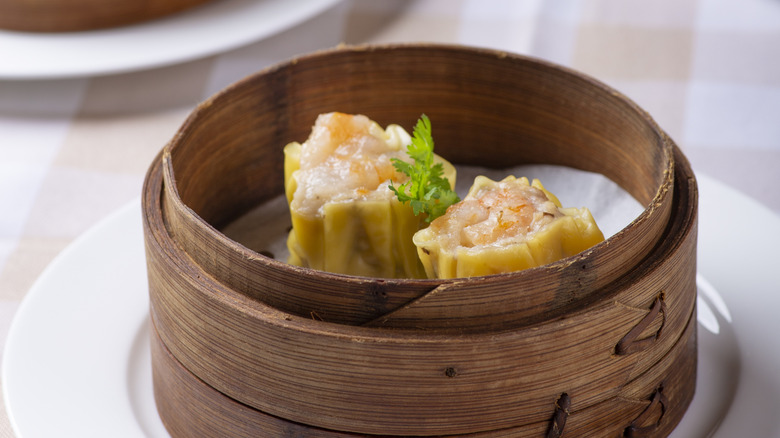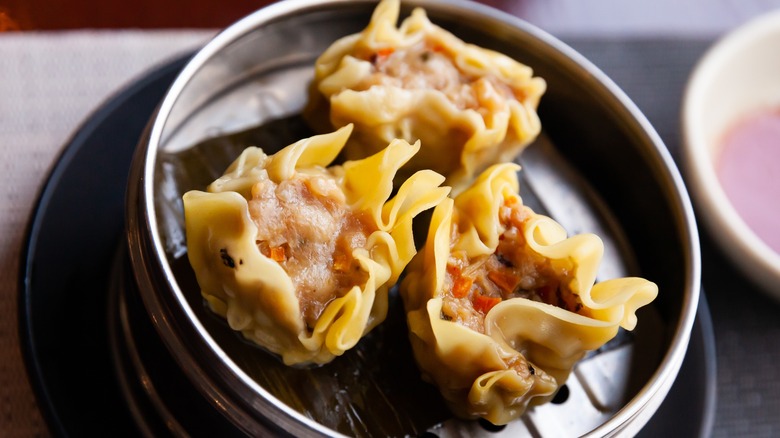How Hawaii's Pork Hash Differs From China's Shumai
Hawaii may be the newest American state, but it's a veritable microcosm of the mainland's cultural melting pot. Hawaiian cuisine is the result of its tropical climate and unique geography, situated in the middle of the Pacific between Asia and the Americas. You'll thus see Asian dishes and cooking techniques transformed with Hawaiian ingredients and American ingenuity. Pork hash is a Hawaiian dish that aptly exemplifies the melting pot of Asian influences and Westernized eating customs in the Pacific.
Described as the Hawaiian rendition of Chinese shumai, pork hash is an open-faced dumpling and popular dim sum snack that arrived in Hawaii in the late 1800s with the influx of Chinese immigrants who worked the island's plantations. Over the past century and a half, pork hash has become a distinct Hawaiian dish that diverges from shumai in many aspects. In fact, you will find pork hash and shumai sold in Hawaii in completely distinct types of restaurants. Pork hash is a popular takeout snack served at local Hawaiian counter service, takeout spots, and even Hawaiian 7-Elevens, while shumai is served at traditional Chinese dim sum restaurants.
Shumai originated centuries earlier, spreading to Southeast Asia and Japan, where it evolved into many varieties with more similarities than differences. However, Chinese shumai and pork hash differ in size, key ingredients, and typical accompaniments.
Differences between shumai and pork hash
While both shumai and pork hash are steamed dumplings formed with the same opening at the top to expose their fillings, the first noticeable difference is their size. While Chinese shumai are small, bite-sized dumplings, pork hash tends to be bigger. They appear to be the size of a large chicken egg, which is around 150 percent larger than bite-sized shumai.
Traditional shumai dumplings blend minced pork and shrimp with mushrooms, aromatics like garlic, ginger, green onions, and occasionally glutinous rice. Pork hash uses ground pork and diced shrimp blended with soy, oyster sauce, sesame oil, green onion, and garlic. Instead of glutinous rice or mushrooms, pork hash uses chopped water chestnuts. Lacking ginger and mushroom, pork hash is less aromatic and lacks the earthy umami present in shumai. However, pork hash calls for an equal proportion of shrimp to ground pork, increasing its oceanic flavor. It also has a unique crunchiness from the chopped water chestnuts.
Lastly, accompaniments for shumai and pork hash are very different. While shumai is served with sweet soy, vinegar, or chili oil, pork hash usually comes with hot mustard and soy sauce. Hot mustard is a Chinese condiment with the same unique throat-clearing heat as horseradish or wasabi. Blended with soy sauce, you get a salty, funky sauce with a strong kick of heat at the finish.

